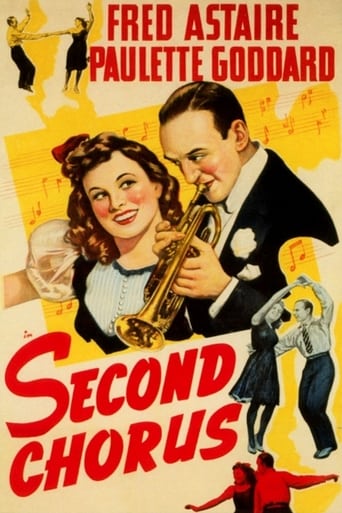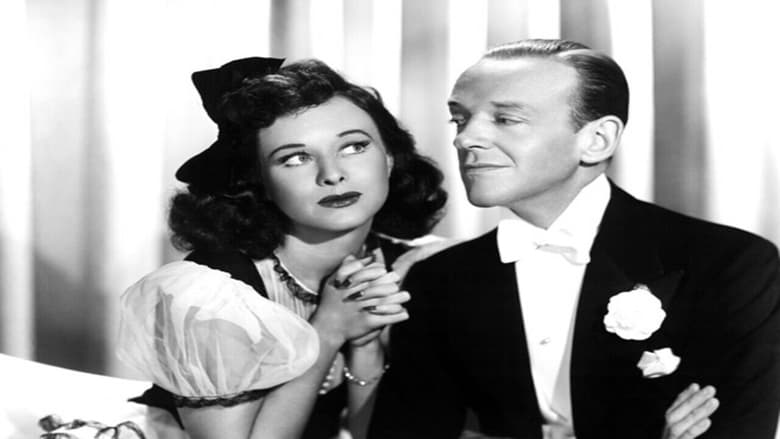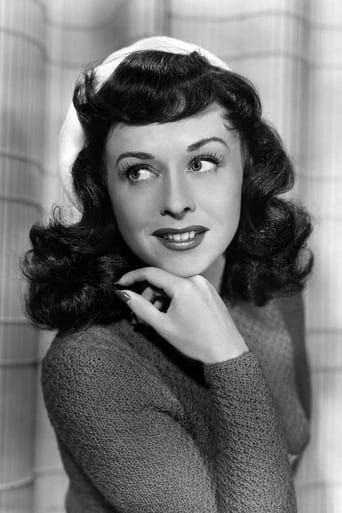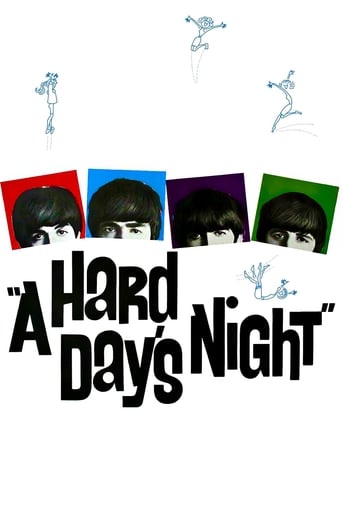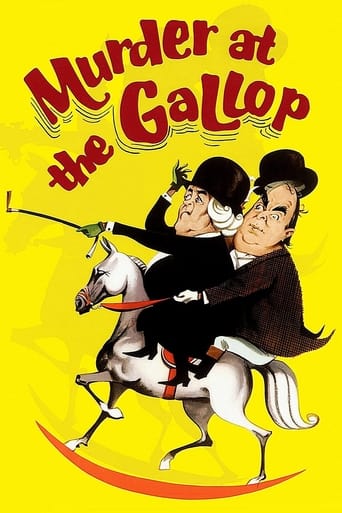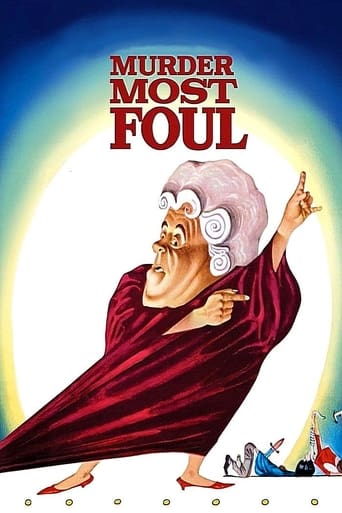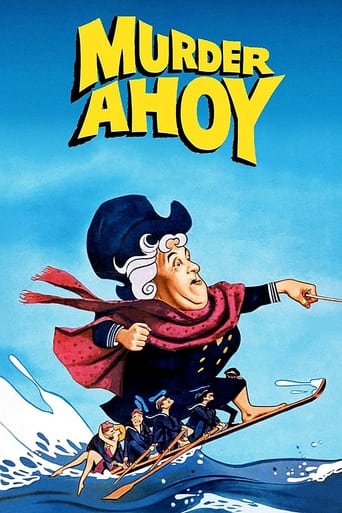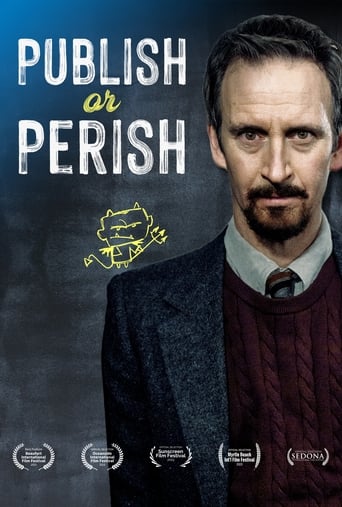Second Chorus (1941)
Danny O'Neill and Hank Taylor are rival trumpeters with the Perennials, a college band, and both men are still attending college by failing their exams seven years in a row. In the midst of a performance, Danny spies Ellen Miller who ends up being made band manager. Both men compete for her affections while trying to get the other one fired.
Watch Trailer
Cast
Similar titles

Reviews
Best movie ever!
A Disappointing Continuation
All of these films share one commonality, that being a kind of emotional center that humanizes a cast of monsters.
The movie turns out to be a little better than the average. Starting from a romantic formula often seen in the cinema, it ends in the most predictable (and somewhat bland) way.
That Artie Shaw must have been hard to live with! married eight times... and to some big names too! Lana Turner, Ava Gardner, Evelyn Keyes. None of those marriages lasted very long, until the last one. Shaw, Fred Astaire, and Charles Butterworth carry this one. The awesome Paulette Goddard is pretty much wasted in this, as "The secretary". The story is so-so, but it's pretty much an excuse to hear Artie Shaw. Turns out Fred Astaire was one of the producers...one of the few films he produced. So of course, he dances to Artie Shaw's music. and sings. Pretty silly. Entertaining... a chance to see all the big stars and hear some great jazz, and watch Fred A do his thing but its all too silly for words. Showing on Turner Classics. Directed by H.C. Potter. Written by Frank Cavett, who would go on to win TWO Oscars! Nominated for two Oscars for Shaw's music, but didn't win.
I thought The Sky's the Limit was the worst musical Astaire ever made until I saw this. This is just dismal. Start with the plot: Astaire is supposed to be a student? He was 40-plus and looked it. Never a conventionally attractive leading man, he got away with it with Ginger but here he just looks his age.But you could forgive that if there had been any decent dancing which is all you really want from an Astaire movie. Instead, there are just three lack-lustre routines: a brief mock- Cossack dance, a decent tap routine at the end (but nothing he hadn't done far better in other movies) and a routine with Paulette Goddard who simply was not a dancer which shows in both the performance and the limited choreography presumably intended to keep within what she could do (dancing apart, she is probably the best thing in the film, beautiful and sparkling).In addition, what songs there are, by Artie Shaw and Johnny Mercer, are below par. Even the best one, Love of my Life, is pretty mundane. Shaw's band makes up for this with some good numbers and Shaw unexpectedly turns out to be a respectable enough actor, albeit in some undemanding scenes.But I can't help wondering if it was the presence of Shaw who wrote the score that resulted in the limited amount of Astaire routines – the big band numbers may not have left enough time for dances. Although cuts in the grating plot and unfunny dialogue could have cleared a load of space.Astaire did not make many duds but this is one of them.
SECOND CHORUS (Paramount, 1940), directed by H.C. Potter, from an original story by Frank Cavett, was an unlikely production for which song-and-dance man Fred Astaire ever appeared. In spite of its backstage musical sounding title, Astaire doesn't enact the role of a dance director, which wouldn't have been a bad idea, actually. Unlike some of his earlier works where he would play a dancer by profession, SECOND CHORUS provides Astaire with a new kind of role, that of a college student (!) with a flare for trumpet playing. While much of the plot devotes itself to the current phase known as "the big band era," featuring band leader Artie Shaw as himself, and with more emphases on comedy during the non musical portions, for a Fred Astaire film, this might prove disappointing for having the least amount of dancing of any Astaire musical up to this point.The story starts off with a social function of a New England university where students and guests are being entertained by the band called Danny O'Neill's University Perennials. Roommates Danny (Fred Astaire) and Hank Taylor (Burgess Meredith), trumpet players who've remained in college for seven years to take advantage of lucrative college band bookings, take notice of their friend Stu's (Frank Melton) date, a young brunette named Ellen Miller (Paulette Goddard). Danny immediately believes Ellen to be interested in him until given a piece of paper by her that turns out to be a summons from the McKinley Encyclopedia Company for unpaid bills totaling $110. Coming to Dunn & Dunn Collective Agency, Danny and Hank meet up with Ellen where she works as secretary for Mr. Dunn (James Conlin). Instead of straightening out matters about the bill, the boys manage in getting Ellen fired instead, only to hire her as both their secretary and manager. Under this newfound profession, Ellen succeeds in obtaining the boys interviews with band-leader Artie Shaw in New York. Instead of landing them jobs, Ellen is offered a position as Shaw's personal secretary instead. As Danny and Hank each compete for both Ellen's attentions and a job in Artie Shaw's band, misunderstandings occur as Ellen becomes involved with a middle-aged man, J. Lester Chisholm (Charles Butterworth).With music and lyrics by Johnny Mercer, Hal Borne, Bernie Hannigan and Artie Shaw, the motion picture soundtrack includes: "Second Chorus," "Sugar" (instrumental); "Everything's Jumpin'" "I Ain't Hep to That Step" (sung by Fred Astaire/ danced by Astaire and Paulette Goddard); "The Ivy Shuffle," "Sweet Sue," "Love of My Life" (sung by Astaire); "I'm Yours," "Double Mellow," "Poor Mr. Chisholm," "The Moon is Shining," "Hoe Down," "Swing Concerto" and "Poor Mr. Chisholm" Marked by none of the visual scales of the RKO Radio musicals where Astaire peaked during his six year screen partnership (1933-1939) with Ginger Rogers, for his Paramount debut, the script finds him, along with dramatic actor Burgess Meredith, in their only pairing, enacting that as friendly rivals, in something much better served by Bing Crosby and Bob Hope, playing tricks on one another in order to either get the girl or land the job in Shaw's band. One amusing scene occurs where Hank (Meredith) rearranges the musical notes of Danny's (Astaire) song sheet prior to his audition with Shaw, and trumpet playing out of synchronization with the other players to offbeat tunes causing him not to get the job. There's also another scene where Astaire dressed up like a cossack singing with a Russian accent sounding very much the way he had spoken in SHALL WE DANCE? (RKO, 1937) in a sequence where he poses intends on fooling a girl (Ginger Rogers) by pretending to be Russian dancer, Petrov. As for the dancing sequences, which are very limited, Astaire does a jive number with Goddard. While her dancing was adequate, but no match to the style of Rogers, Goddard never danced on screen again; and the "Swing Concerto" finale where Astaire not only conducts the band, but tap dances and plays the trumpet simultaneously. Charles Butterworth, in his usual droll manner, even has a song, "Poor Mr. Chisholm" dedicated to his character. Later reissued in 1947 by Astor Pictures, SECOND CHORUS became a public domain product during the birth of home video in the early 1980s, most distributors acquiring poor quality prints taken from its reissue. Around that time, SECOND CHORUS turned up as an overplay product on various local or public TV stations as well as cable Television, notably on Nickelodeon's "Nick and Nite" Movie during the after-midnight hours prior to 1992. There was even a motion picture soundtrack of this film distributed in record stores at or about 1979-1980. The best available print to SECOND CHORUS, however, with original Paramount logo intact, can be found on Turner Classic Movies where it premiered June 14, 2004. Regardless of its reputation being one of Fred Astaire's lesser efforts, SECOND CHORUS is still watchable, especially when fortunate enough to view it from a crystal clear print. (***)
Let's begin by saying that Fred Astaire is watchable in ANYTHING such is his charisma, vocal and dancing ability but having said that this vehicle needs all the help it can get. Maybe in 1940 Paulette Goddard was considered leading lady material but even Joan Fontaine (who co-starred with Astaire in A Damsel In Distress) was better than this. It's possible also that back in 1940 moviegoers wouldn't have questioned two middle-aged guys who keep deliberately flunking courses in order to stay in College and play in a band - BUT, did no one wonder about the OTHER band members? Theoretically the band would change personnel every year given that the average College degree takes four years to obtain and presumably when the band was founded it contained members from Freshman, Sophomore, Junior and Senior Classes. On the plus side there is, of course, Artie Shaw, who ran one of the Greatest bands of the Swing era and far outclassed Benny Goodman as a clarinettist. It's one of the few pictures where Astaire has no real excuse to dance - by which I mean the storyline makes no mention of him as a hoofer as is often the case in his movies - so that the few dances have to be contrived and even then they pale by comparison to his hoofing in other films. If you're an Astaire completist you'll want to see this but there's not an awful lot to make you want to own it.
